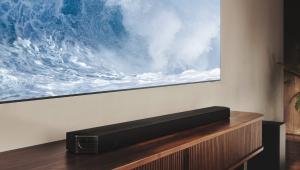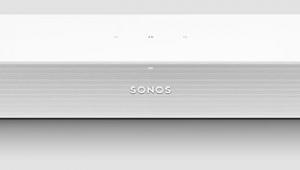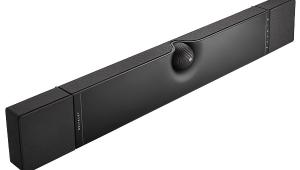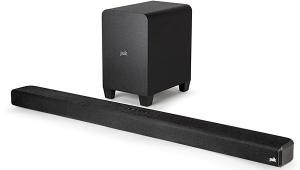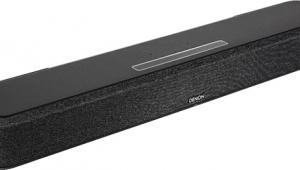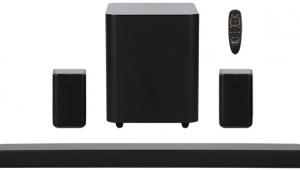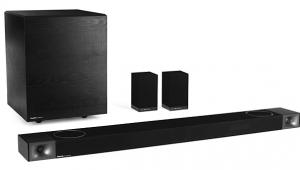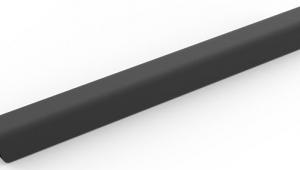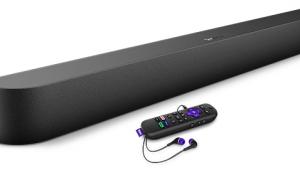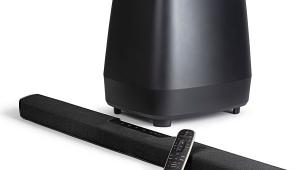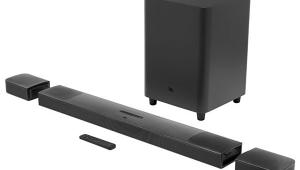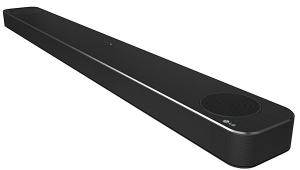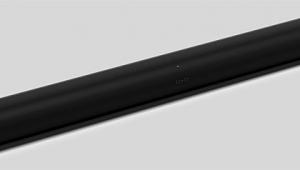I can totally relate to the experience shared here! I’ve been using https://www.cricketfresh.in/ for a while now, and it’s honestly been a game-changer for my cricket experience. The live scores are quick and accurate, making it super easy to follow matches no matter where I am. Also, the predictions and expert insights are spot on, especially for major events like the IPL. If you’re a cricket fan, this site is definitely a must-have!
Sony HT-ST5000 Soundbar System Page 2
Of course, music is a revealing test of any audio reproducer. According to Sony, the bar’s Music mode uses only the outermost coaxial driver arrays for stereo reproduction. (For the record, some modes, such as 3D Surround and Movie, seemed to activate the four front-firing effect drivers more than other modes did. The Music mode didn’t activate them at all. Defeating the Sound Effects function altogether, which you can do on the setup page, caused two-channel material to be reproduced from all three coax arrays, with the center one delivering some sort of derived-center content.)
Anyway, having identified the Music mode as the best choice for two-channel listening, I cued up a few of my favorite “wet-read” tracks. These tend to be things with relatively steady-state spectral content and stable midbass contribution; Boz Scaggs’ classic “Lowdown” is an excellent example. What I heard was a very solid image and laudably honest tonal balance, but still with a bit too much midbass and not quite enough deep bass for my taste. That said, the sub does deliver at least some deeper bass, if you can place and balance the system to reveal it. Happily, Sony provides a 1-through-12 sub-level control, always available on the system’s remote. I generally found that setting this to 3 or 4 delivered the most natural midbass balance in my room, though at some cost in deep-bass impact. I also found that my slight up-angling of the soundbar certainly enhanced its treble snap and air.
So tweaked, the HT-ST5000 proved eminently competent. A fine recording like Rebecca Pidgeon’s The Raven was sharply drawn, with solid (if slightly understated) underpinnings, natural vocal tones, and nicely defined percussion details. As a music reproducer, the Sony was easily competitive with the other $1,000-plus bars I’ve encountered.

Comparing a soundbar to freestanding loudspeakers isn’t really cricket, but the Sony also stood up to my Energy stand-mount monitors quite well. The Energy’s produced a significantly wider image, of course, and they had more depth and were more spatially detailed. They also went somewhat lower (my long-discontinued Canadians have useful output to a bit below 40 Hz, and a leaner in-room bass balance), and they showed distinctly brighter, airier top octaves on cymbal rides, brass, and strings. But these were differences mostly of degree rather than kind: The Sony’s overall musical presentation was tight, honest, and notably listenable.
Atmos(tly)
Still, after faithfully giving you the evening news, reproducing movie sound is the central task of any high-performance soundbar. And on a rotation of familiar scenes from films like Saving Private Ryanand The Lord of the Rings: The Fellowship of the Ring, the HT-ST5000 could quickly draw even a critical viewer away from evaluation and into scene and story — which, in one sense, is all we ask of any home theater system, regardless of type. And while falling perhaps 10 dB short of absolute (THX) reference level, the Sony could play plenty loud enough to conjure up a satisfyingly cinematic experience
I watched large swaths of 3:10 to Yuma at volumes from 36 to 44 (of 50 steps), and I never felt cheated on level, even in my substantial studio. On properly level-referenced material (such as nearly all movies), the Sony proved usable all the way up to the limit of the volume control, but it stopped getting significantly subjectively louder a few clicks shy of that, and the last few steps seemed audibly harder and more compressed. Overall, dynamic impact on scenes like the tunnel fight and chase in chapter 11 was impressive, for a soundbar — meaning that big events like the dynamite explosion sounded just a bit squished as compared with the performance of my vastly bigger everyday system. The sub had plenty of oomph to keep up on both music and effects, though more output below 40 Hz or so would have been welcome at this price. Issues of sub integration were mostly forgotten, except for a couple of instances of excessive rumbling in stagecoach chase scenes and the like.
 The Ultra HD Blu-ray of 3:10 to Yuma has a mix in DTS:X, not Dolby Atmos, and while the Sony wasn't X certified at the time of my eval, it did direct some surround-channel elements to the top-firing drivers nonetheless, in both Movie and Standard modes (and, of course, 3D Surround). In any event, Atmos soundtracks added decidedly to the Sony’s spatial capabilities. Dolby’s own demo Blu-ray made this quickly evident, with material like the “Amaze” clip delivering deeper, broader, and, yes, taller ambience than I had hitherto heard from the soundbar on any program. Since Sony wasn’t forthcoming in the manual about which mode to use, I tried them all: 3D Surround was the most dramatic, while Movie and Standard seemed about the same, slightly less wide and ambient but more focused on both dialogue and lateral effects. I settled on Movie. But while all three produced a nice sense of size and space, at no point could the HT-ST5000 create much in the way of true envelopment, Atmos or otherwise — and nothing like the “birds overhead” effects of my full 5.1.4 setup. On Atmos material like Inferno, surround ambience opened up nicely to about 70 degrees off screen, but it was never quite as far as lateral to the listening position, nor anything like genuine side/rear-originating surround sound. In this, the HT-ST5000 is about on par with most other surround-speaker-less “surround” soundbars I’ve encountered.
The Ultra HD Blu-ray of 3:10 to Yuma has a mix in DTS:X, not Dolby Atmos, and while the Sony wasn't X certified at the time of my eval, it did direct some surround-channel elements to the top-firing drivers nonetheless, in both Movie and Standard modes (and, of course, 3D Surround). In any event, Atmos soundtracks added decidedly to the Sony’s spatial capabilities. Dolby’s own demo Blu-ray made this quickly evident, with material like the “Amaze” clip delivering deeper, broader, and, yes, taller ambience than I had hitherto heard from the soundbar on any program. Since Sony wasn’t forthcoming in the manual about which mode to use, I tried them all: 3D Surround was the most dramatic, while Movie and Standard seemed about the same, slightly less wide and ambient but more focused on both dialogue and lateral effects. I settled on Movie. But while all three produced a nice sense of size and space, at no point could the HT-ST5000 create much in the way of true envelopment, Atmos or otherwise — and nothing like the “birds overhead” effects of my full 5.1.4 setup. On Atmos material like Inferno, surround ambience opened up nicely to about 70 degrees off screen, but it was never quite as far as lateral to the listening position, nor anything like genuine side/rear-originating surround sound. In this, the HT-ST5000 is about on par with most other surround-speaker-less “surround” soundbars I’ve encountered.
That said, I could indeed appreciate the Atmos height contributions in sequences like the street scene of Inferno’s chapter 8, where the ringing church bells, while not overhead, at least sounded from above the screen center, adding a valuable sense of dimension. I also noticed that placing the bar flat again (instead of tilting it up, as I had done for music) enhanced the sense of height slightly.
Ergonomics, Features & Bottom Line
The HT-ST5000 includes a very serviceable DLNA client, which played my home library with fine sound and good interface responsiveness, including all of my DSD and hi-res files. You can also stream audio via Chromecast built-in or direct from a Spotify app, of which the former worked fine from a Samsung Android tablet (I’m far too cheap for a Spotify account); ditto Bluetooth. Additionally, the soundbar can function as a BT transmitter, handing off audio to wireless headphones or multiroom speakers via Sony’s proprietary ecosystem, and it can participate in a Sony Music Center wholehouse/wireless system. Likewise, the bar can play and relay music in Sony’s own LDAC hi-res format, though not having a compatible player in hand, I couldn’t try this. And Sony claims compatibility with Google Home, for integration with other such smart speakers and voice control.
As mentioned, Sony specs the HT-ST5000 as 4K/HDR-ready, and indeed, native 4K passed through from my Ultra HD Blu-ray player just fine. I’m generally leery of HDMI-control (CEC) schemes, having gone down that rabbit hole in the early days with hair-tearing results. However, I was delighted to discover that the bar responded to the power and volume commands of my Vizio TV’s remote, with no input from me whatsoever and with no signs of command confusion. All in all, using the HT-ST5000 was a pleasure. Its own remote is small but sensibly laid out and easy to use, and the bar’s onscreen pop-ups were mostly acceptably quick and responsive.
Any soundbar is by nature a compromise solution, but Sony’s choices for the HT-ST5000 seem to me particularly well selected. While it takes some careful setup to get an optimal mate between bar and subwoofer, once it's dialed in it delivers everyday TV audio with intelligibility and heft but without getting in the way of casual viewing. It produces an honest and clean musical presentation. And it offers a very substantial upgrade in cinema-like audio for movies and TV, with plenty of clean level and a clear spatial component. Sure, we’d all like to have a custom home theater with slick built-ins and a rack of glowing componentry. But in the real world, many will find Sony’s latest soundbar an elegant, livable substitute.
- Log in or register to post comments


